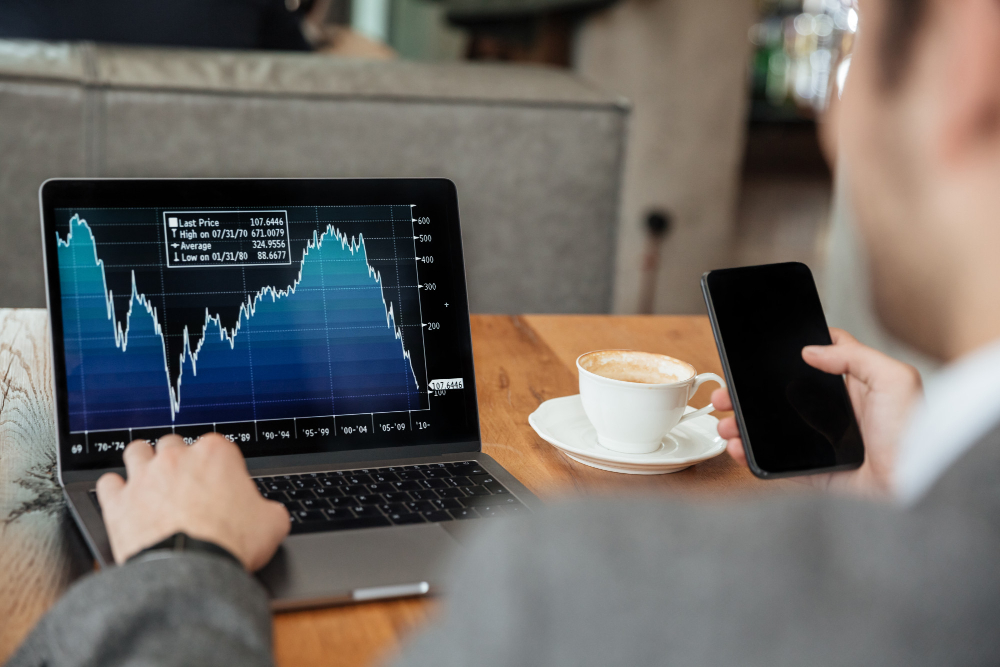This week’s journal posting is a response to a comment by ‘fastbucks’ last week when the following question was posed:
“Another related rule is the 6% rule, i.e. you cannot have a total risk in your positions at any one time greater than 6%.
I don’t suppose you have any comments on that?”
The 6% Rule is explained in detail in Dr Alex Elder’s book “Come into my Trading Room” on pages 223 – 227 and in many places on the worldwide web. It is designed to counter extreme market movements in a short period of time or a string of lots of little losses that add up to a large drawdown, or, as the Dr says, “protection from piranhas.”
Importantly, it is a monthly drawdown rule, and hence resets every month, that is a call to action to cease trading for that month when a portfolio drops by 6% for the month. It is not a lifelong portfolio maximum drawdown rule.
To try to minimise the potential of reaching the monthly 6% drawdown the rule requires that the total portfolio risk doesn’t exceed 6% at any given time. This means that using the 2% rule for risk per trade would only allow 3 simultaneously open positions ( 1% rule would allow 6 open positions) with the rest of portfolio capital sitting in cash until one or all three trades move up and overall portfolio risk is less than 6%. At the beginning of each new month a recalibration is required to assess current portfolio risk.
It would be quite difficult for an active investor to deploy Elder’s 6% rule without a programmed portfolio management tool (Excel could be used) to do daily portfolio risk calculations as it can get quite complex depending on how your open positions move in direction and size on a daily basis.
Two questions spring to mind that would be answered by conducting portfolio simulation:
- “When deploying the 6% rule what are the maximum drawdowns that a large sample of portfolios would suffer over a number of different market conditions over a sufficient period of research?”
- And: “If the maximum drawdowns are reduced, by how much would the associated portfolio growth be reduced when deploying the 6% rule?”
To even use the word ‘reduced’ implies that there has to be an existing benchmark, complete with rules of engagement, against which to measure newly applied concepts. Most don’t even have a starting benchmark!
Any active investor needs to consider what risk management processes and concepts they have in place in light of their investing scenario. Having none is NOT good. Having some is a start but having an excellent idea what they might produce in terms of maximum drawdown (and other drawdowns from an underwater curve) and in terms of growth is where every active investor needs to be with their investment approach.
SPA3 takes more risk than Elder’s 6% rule and hence has more degrees of freedom from which to generate growth but also to generate drawdown. At this stage it is unknown how much portfolio growth would be reduced by if the 6% rule was implemented in SPA3.
You see, whenever risk is reduced it is done so to reduce drawdown levels. If it doesn’t then the concept isn’t worth implementing. And if it doesn’t reduce maximum drawdowns AND reduces growth then that is even worse.
When researching risk management concepts, it must be understood that there is a strong correlation between maximum drawdown levels and portfolio growth. And consider this. Is it worth limiting growth in your portfolio forever by an amount of CAGR to reduce 2 or 3 periods of maximum drawdown by a few percentage points?
For some the answer will be yes, for others no, and for others it will depend on how much. Most don’t know what they can handle in terms of risk and drawdown in the first place!
Right now we don’t know for sure that deploying the 6% rule over and above the risk management rules already contained in SPA3 would reduce growth (or even maximum drawdown) and, if so, by how much, but in my research experience I am pretty sure that the 6% rule would reduce SPA3 growth.
Furthermore, it doesn’t appear that Dr Alex Elder nor anybody else in our space would know either.
So where does this leave us wrt to the 6% rule or any other risk management rule? We would have to weigh up whether spending significant resources to research it would be worth it.
In any case it would only really be relevant if the current SPA3 drawdown and growth combination were both off the mark. Most don’t use a rigorous trading process at all let alone being anywhere near a mark that they are aware of!
As far as SPA3 goes, the current results are the results. It is what it is, and what it is massively outperforms the market and the average performance of managed and index funds in terms of growth and drawdown.
Having said that, everything can be improved upon (have to have a benchmark in the first place on which to improve) and the one area in which we will be doing research this year is additional risk management concepts for trading leveraged portfolios. The research will entail overall portfolio-at-risk concepts.
If you would like to learn more about SPA3’s risk management principles, rules and tools, you can register for a demonstration here.



5 Responses
Using both Daily and Weekly MMA on the XAO and individual shares, I have not seen a situation where a market collapse is so fast that you cannot see it coming on the Daily MMA first followed by the same reversal on the Weekly.
If I see a reversal happening on the daily chart of the XAO with MMA turned on, I immediately start withdrawing some cash from the market.
Hi Gary,
A good post, and I follow the 6% rule religiously. Although I only trade forex, the maximum amount of my capital at risk in the market at any time is 6%. Separately, any individual trade can only be up to 2% risk and is usually 0.75-1%. Lastly, I differentiate between currency pairs, and trade up to 2% only for those with less volatility, and down to 0.75% for those pairs (usually yen crosses or gold/silver) which can move quickly and often violently.
Keep up the good work in helping traders to protect their capital.
Hi Gary,
I am finding your discussions regarding the various ‘trading rules’ very interesting and really like the concept of using exploratory simulation to guide your portfolio risk and reward objectives.
It appears that the definition of the level of risk, both trade risk and portfolio risk, is central to adopting a robust and reliable trading regimen. Because it seems that you really can’t trade consistently or reliably without defining or calculating the risk of a trade, I’d love you to outline and explain how you assess or define the risk of a particular trade.
In your trading manifesto you used the example of two shares where one (DEF) was twice as volatile as the other (ABC), and this gave a trade risk of 12% for DEF and 6% for ABC. Using these figures you determined the position size for each stock based upon a desired portfolio risk and the calculated trade risk. I’d love you to go back one stage further and explain how to assess, or at least what factors to consider in determining, a stock’s trade risk. Obviously volatility is crucial but is that the only factor that determines your calculated trade risk?
Gary,
I love the way you have “beginner’s mind” with respect to all these so-called rules that we use to trade.
There is nothing like mathematics to discern the truth.
It never lies!
I look forward to the your busting of the next myth.
Response to Comment by Simon:
Good questions are posed in Simon’s comment however the answers will require a bit more detail than can be provided as a ‘comment response’.
After some deliberation I have decided to respond to these questions as a series of blogs. Stay tuned.
Regards
Gary